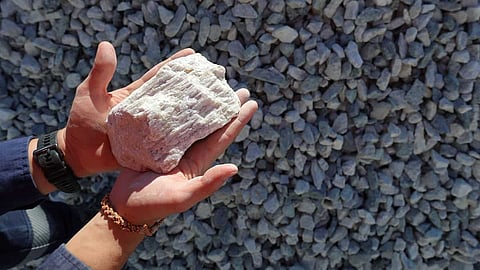

New Delhi: India’s transition to electric mobility and renewable energy hinges on a steady supply of critical minerals — lithium, cobalt, nickel, graphite, and rare earth elements — that power batteries, solar panels, and advanced electronics. At present, the country imports nearly all of these materials, exposing domestic industries to volatile global markets.
Follow Energy Watch on X
To change that, the government has introduced the Critical Mineral Recycling Incentive Scheme, a Rs 1,500-crore initiative designed to promote large-scale recycling facilities that can extract critical minerals from secondary sources such as electronic waste and spent lithium-ion batteries. The scheme is a key component of the National Critical Minerals Mission (NCMM), which seeks to build strategic self-sufficiency in materials essential for India’s clean energy economy.
The scheme, approved by the Union Cabinet in September and detailed by the Ministry of Mines on October 4, will run for six financial years—from FY2025-26 to FY2030-31. The government has proposed an indicative allocation of Rs 700 crore for lithium-ion battery recycling, Rs 650 crore for e-waste recycling, and Rs 135 crore for other forms of critical mineral recovery.
The incentives will be provided on a reimbursement basis for both capital expenditure (capex) and operational expenditure (opex). The goal is to attract investments in greenfield and brownfield recycling facilities that can supply domestically recovered critical minerals to downstream industries such as battery manufacturing, electronics, and renewable energy.
Beneficiaries under the scheme include Indian recyclers engaged in the recovery and extraction of critical minerals from eligible secondary sources. They are classified into two categories based on Global Manufacturing Revenue (GMR) — Group A for companies with GMR of Rs 200 crore or more, and Group B for smaller firms and start-ups with GMR below Rs 200 crore.
The scheme explicitly excludes facilities engaged only in black mass production — an intermediate processing stage in battery recycling — focusing instead on those that carry out the actual separation and recovery of minerals.
The capex incentive will be disbursed in two tranches: half upon the commencement of commercial production, and the remaining half linked to cumulative capacity utilisation milestones. The opex incentive will be tied to incremental sales performance.
Applications opened on October 2, 2025, and will remain open for six months, until April 1, 2026. Projects that qualify must remain operational for a minimum of three years from the start of commercial production, or one year after receiving the final incentive instalment, whichever is later.
To encourage more participants, the government has eased entry barriers for recyclers handling black mass—a residue obtained from spent lithium-ion batteries. For such units, the input capacity threshold has been reduced by 50 percent. However, these recyclers must source black mass exclusively from entities registered under the Extended Producer Responsibility (EPR) framework of the Central Pollution Control Board (CPCB), as mandated under the Battery Waste Management Rules, 2022, and must furnish proof of traceability.
The Rs 1,500-crore incentive scheme is India’s first structured attempt to create a circular economy for critical minerals, ensuring that valuable resources locked in waste streams are recovered and reintroduced into industrial supply chains.
Follow Energy Watch on LinkedIN
By fostering domestic recycling capacity, the Ministry of Mines hopes to reduce India’s reliance on imported raw materials, attract technology partnerships, and strengthen the foundation for a secure, self-reliant energy transition.
